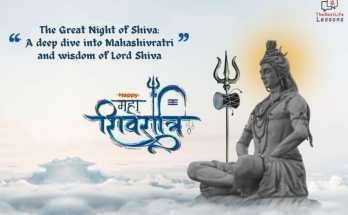Lohri 2024: In North India, Lohri is observed as an optimistic festival. The day prior to Makar Sankranti is dedicated to celebrating this festival. Sikh and Hindu communities in Punjab and Haryana especially celebrate this festival. Farmers attach great importance to the Lohri festival. Fields are covered with crops at this time of year. Lohri is the name given to the nightly fire that is lit after a wooden circle is constructed to celebrate the festival. A symbol of purity and good fortune is this fire. Offers in this fire include roasted sesame seeds, jaggery, peanuts, rewari, gajak, etc. Do you know why people light fires on Lohri Festival. Let us know the religious significance of the fire worshipped during Lohri.
What Lohri Means – Lexical meaning of Lohri: The term “Lohri” originates from “Tilohri,” which is composed of the words “Til” (sesame) and “Rorahi” (jaggery). It gets its name from this. The purpose of this celebration is to give thanks to the natural world. Foods like jaggery, gajak, and sesame seeds are offered to the God of Fire on this day. The farming community in Northern India celebrates Lohri primarily by offering their harvested crops to the god Agni. So, Lohri signifies the start of harvest season. The new year officially began on this day as well. In addition, Lohri indicates the end of the winter season, which peaks on that day and then progressively decreases thereafter. Consequently, Lohri night is customarily the longest night of the year known as the winter solstice.
Traditional Significance of fire worship during Lohri: The nightly fire, known as Lohri, is the focal point of the celebration. The Lohri fire is a symbol of Agnidev. One location lights a fire at night on this particular day. Everyone assembles in front of the fire. Together, they offer Agnidev with sweets made of jaggery, sesame seeds, and other ingredients. Mythology holds that messages and prayers are sent to the Sun God by people through the flames of the bonfire lit on Lohri, which is believed to help in crop growth. The land is blessed in return by the Sun God. Makar Sankranti is observed on the day after Lohri.
Cultural Significance and Symbolism with Abundant Blessings:Lohri is a tapestry woven with threads of cultural significance and symbolism that goes beyond the bonfires and sweet treats. Every component of the festival has a deeper significance that reflects its agricultural origins and the cyclical nature of existence.Worshiping Agni Dev is believed to bring blessings for the family in the coming year.
Revolving around the bonfire represents life’s cyclical nature. It stands for the ever-present cycle of the seasons, harvests, and festivals. Gathering in this circle, families commemorate not only the passing of the seasons but also the enduring ties of familial connection and community.
On Lohri, why people lit fire?
Mythological beliefs attach significance to the Lohri fire tradition, linking it to Mother Sati. The stories say that King Daksh invited all the gods for the Mahayagya ritual, but he did not invite Lord Shiva and Sati. But Mother Sati continued to reach the Mahayagya even after this. But Sati was hurt and left her body in the fire pit because her father Daksh had been disrespectful of Lord Shiva a lot. It is said that Mother Sati’s sacrifice is honored by this fire.
The bonfire’s lighting represents the triumph of hope over despair and light over darkness. Gathering around the fire, families pray for wealth and ask for blessings for a bountiful crop. The bonfire transforms into a positive lighthouse that points the way for communities toward a better, more prosperous future.
Conclusion
All festivals are a symbol of hope, love, harmony, aspirations and joy. We all promise ourselves to shun all our bad habits and evils. Moving forward with new promises and goals, We must celebrate festivals with goodwill for all and having commitment with ourselves for providing helping hand to those in need. All human beings on this planet are like a family as mentioned in our ancient holy sculptures and it’s the topmost responsibility of every human being to ensure the accomplishment of basic needs of every human being as well as other creatures on the planet. So if you agree, let’s pledge on this Lohri Festival to always be ready to assist needy and unprivileged and also to shun all our evils in the fire of this Lohri Festival.
Wishing a very happy, promising and prosperous Lohri to all!




